Superintendent Update
August 2024
August already, this season has brought some unusually wet conditions, causing significant turf stress and disease issues. August also means time for tee aerification and our annual greens interseeding on August 20th and 21st both are crucial for turf recovery and long-term health.
August Turf Management Update
Hard to believe that August has arrived already. With about 30 inches of rain year-to-date, this summer has been wetter than usual. I often say, “It’s better when I can control how much water the golf course gets,” but this summer has truly tested that statement. Fortunately, the golf course drains well, and it sure has kept the rough lush and green.
Managing Turf Stress
The extended wet conditions, however, have begun to stress the turf significantly. All the rain has led to a lack of rooting, weakening the turf’s ability to maintain its health. Additionally, when the turf is weak due to excessive moisture, it leads to disease and abiotic stress. (See photos and captions) Some of these diseases we seldom encounter, much less as many at once as we have seen this year. In the coming weeks, you will notice tee boxes and a few other areas being aerified. This process helps alleviate compaction, aids in organic matter reduction, helps dry out the soils, and improves moisture penetration into the soil profile—all to help the plant recover from the stresses of summer. Please be patient as we move through these maintenance practices.
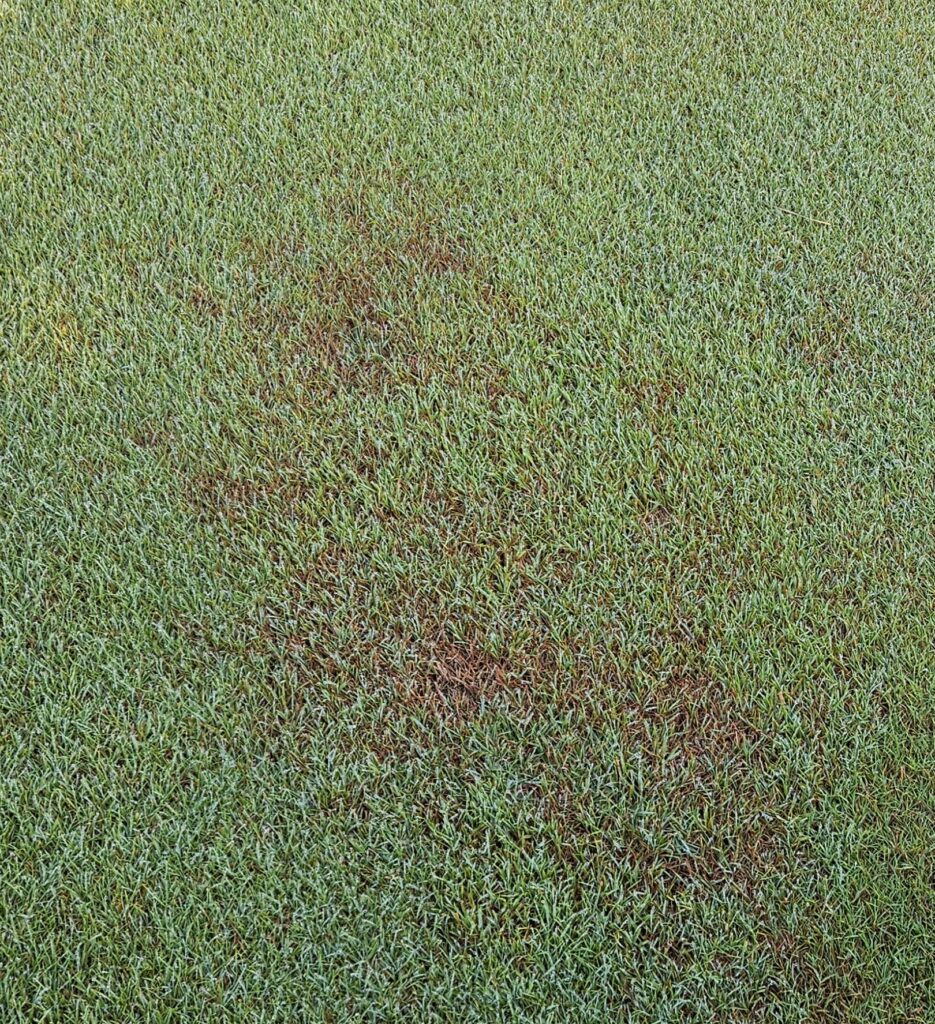
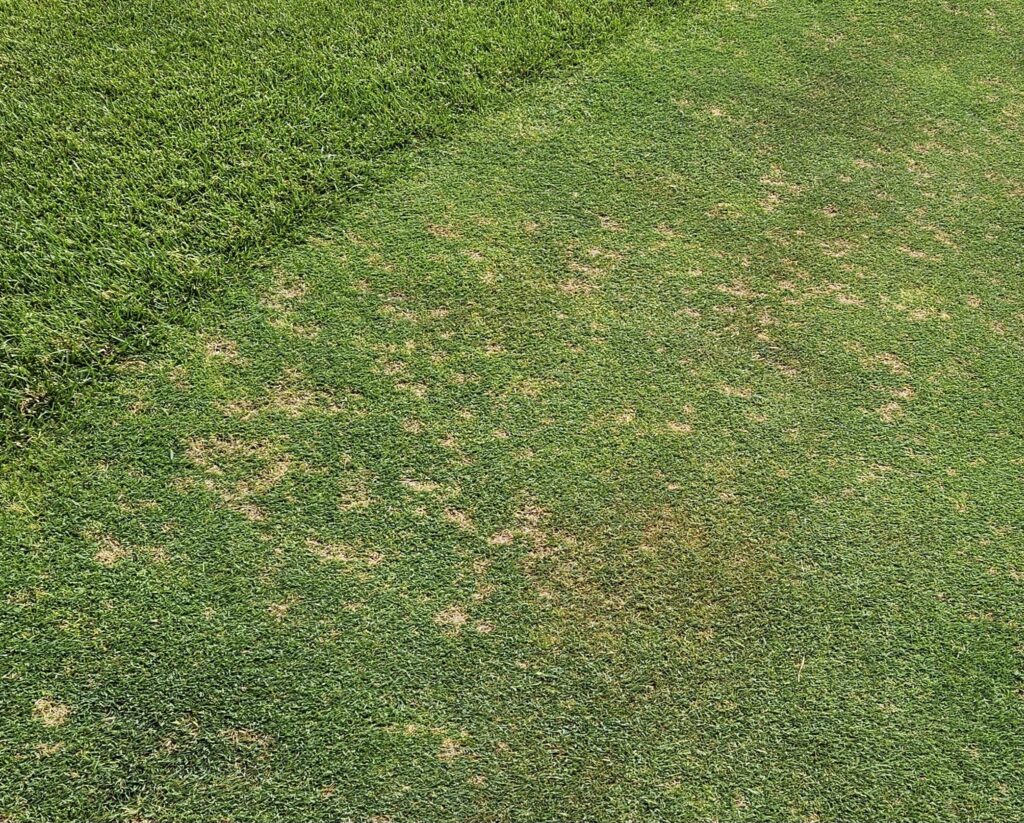
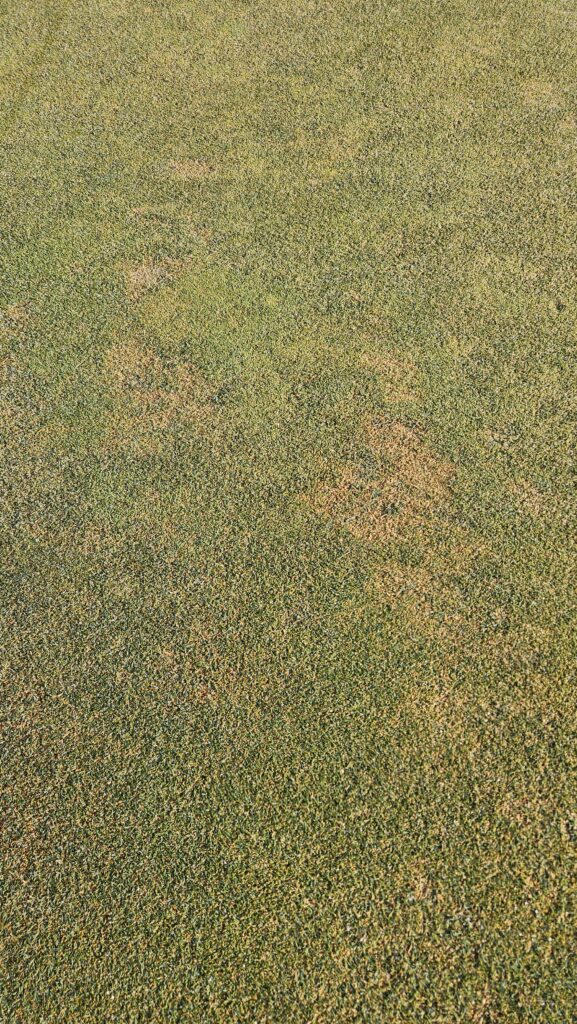
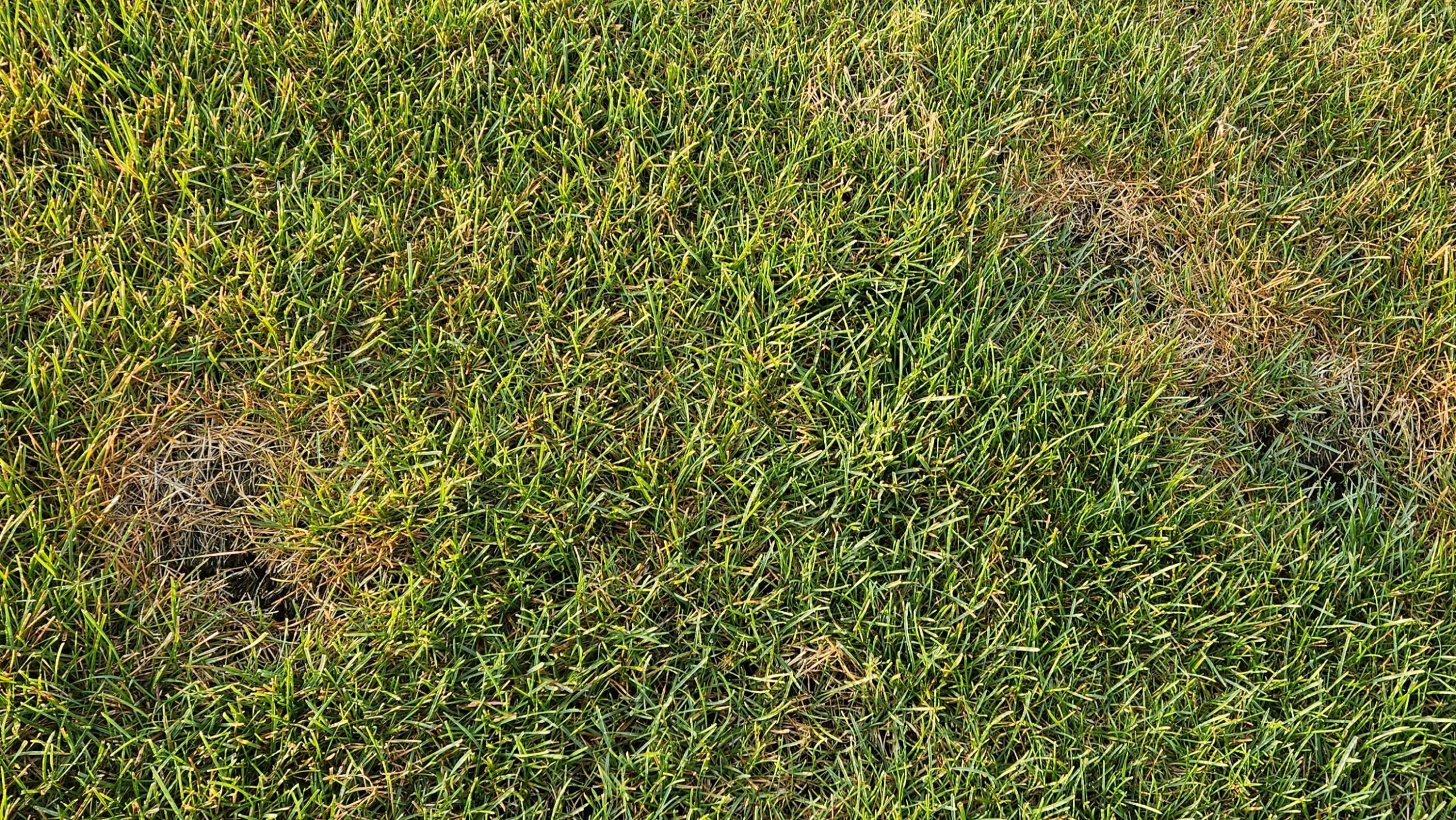
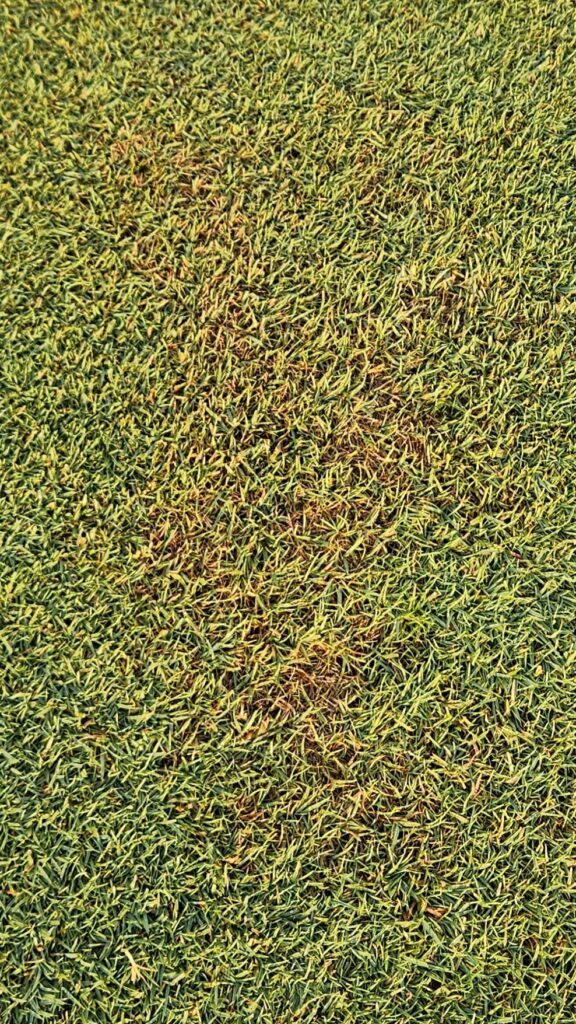
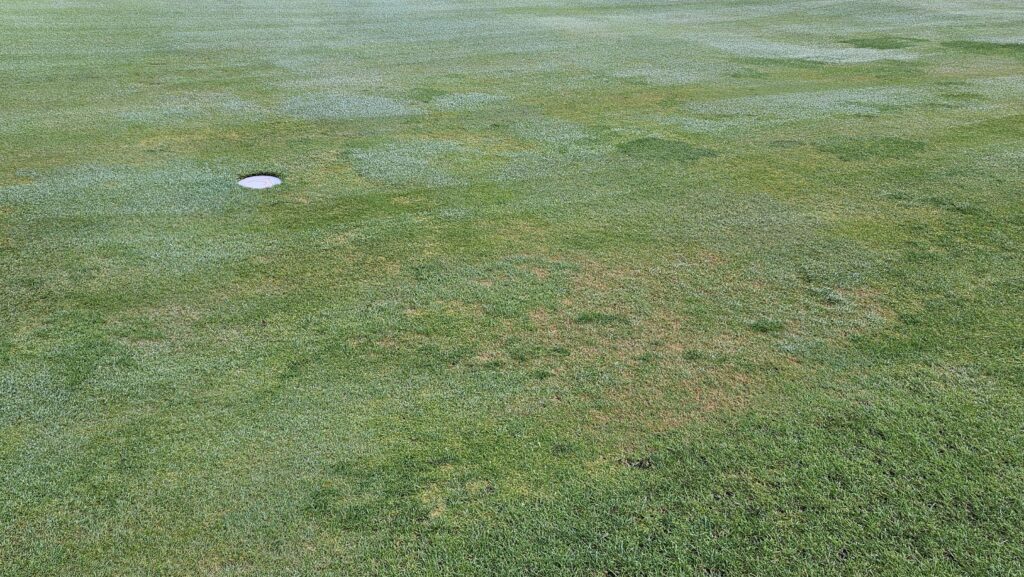
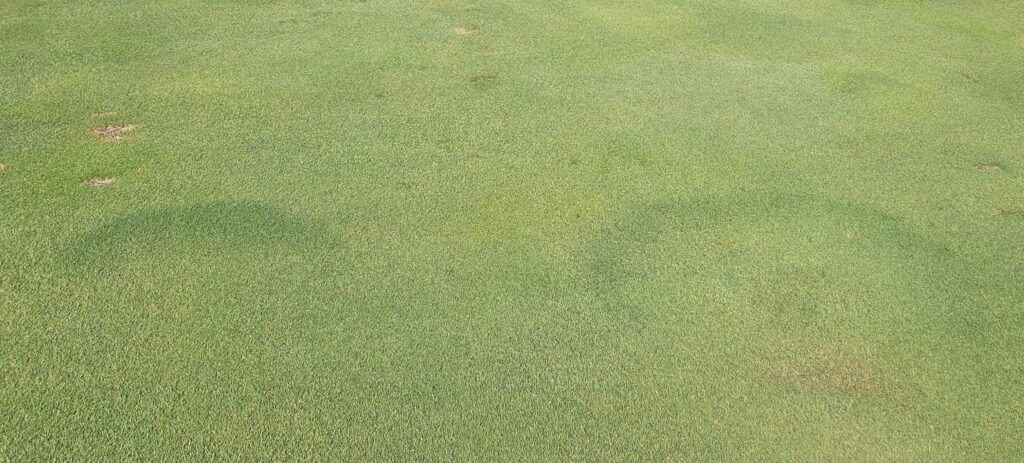
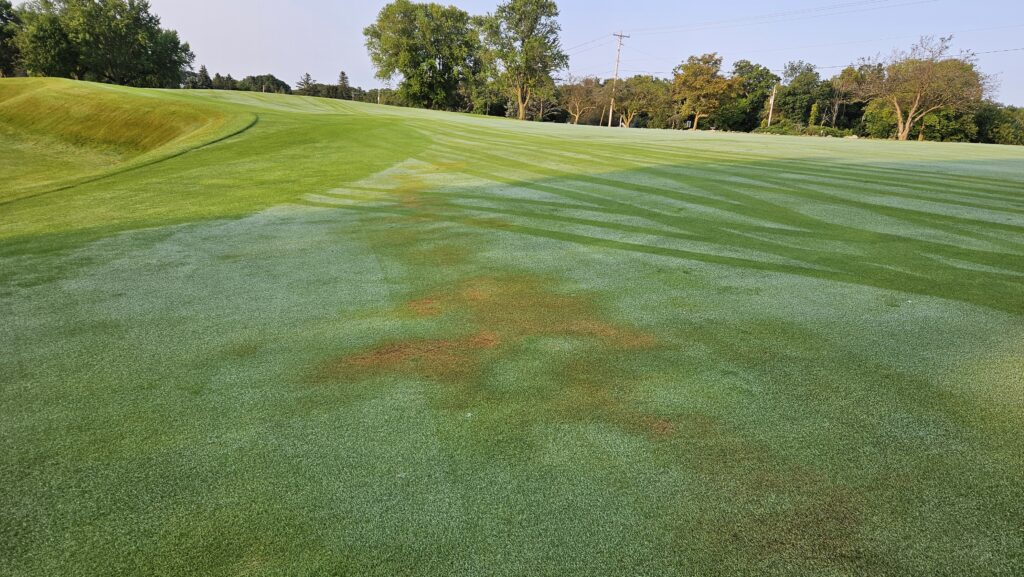
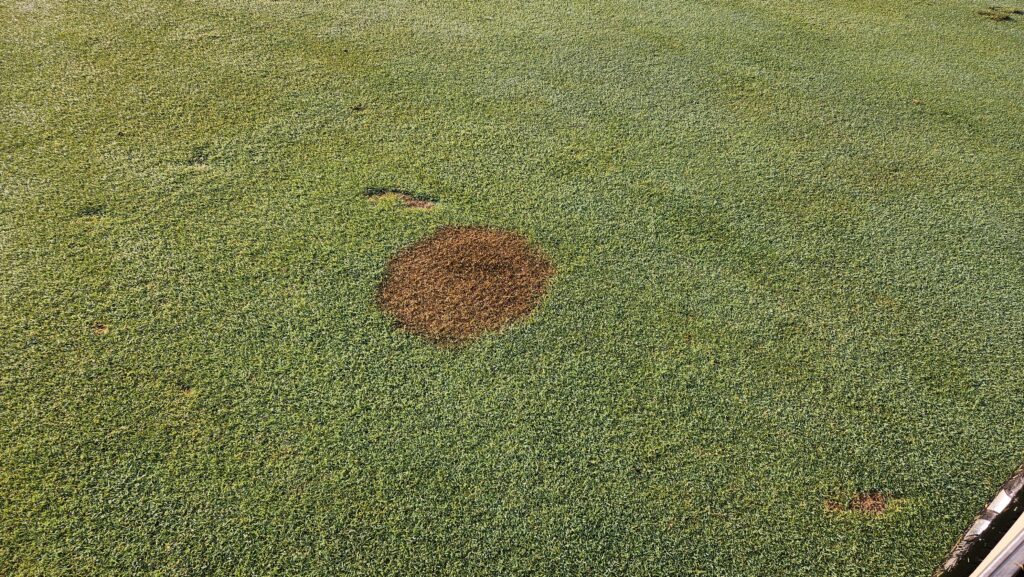
Greens Venting
I am also planning a mini tine or spiking of the greens, timing it carefully around weather conditions and club events. This procedure will allow the greens to breathe and provide slight compaction relief from daily mowing and rolling. This gas exchange and compaction relief will benefit both plant and soil health with minimal to no disruption to the playing surface.
Greens Interseeding Program
Our Greens Interseeding Program will continue August 20th and 21st. During this time, the nine holes being worked on will be closed to ensure we can complete this process smoothly, as the current plan is to slit seed in two directions, followed by a mow, double roll, and topdressing. We will reopen each set of nine holes as soon as possible and appreciate your understanding.
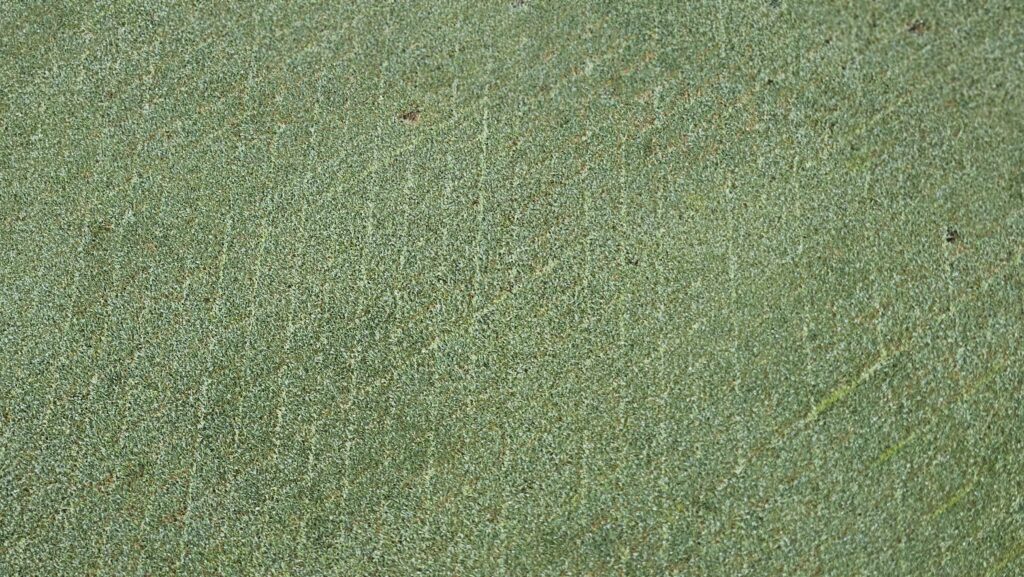
The interseeding process is a delicate balance as we aim to maintain an acceptable putting surface while timing is crucial. The summer months provide an opportunity to outcompete the annual bluegrass weakened by the summer stresses. However, the same stresses can also be tough on young bentgrass seedlings. For a few weeks following interseeding, the greens may need careful monitoring to help the seedlings survive.
The photo below shows the slits in the green where seed has been placed (left arrow) and the seedlings emerging from the soil (right arrows).
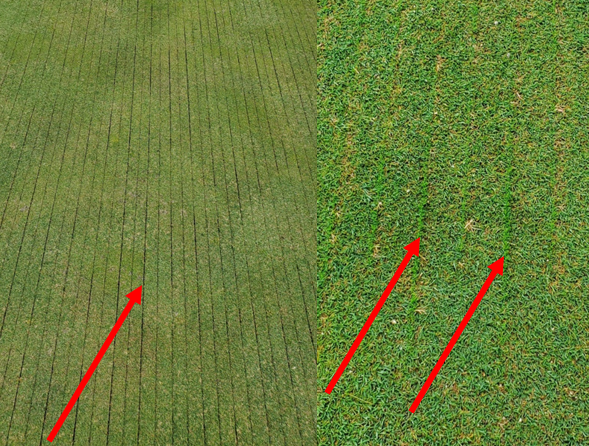
The arrow on the left point to the slits in the green where seed has been placed and the two arrows on the right show the seedlings emerging from the soil.
Long-Term Conversion to Bentgrass
Seeding the greens once is just a small step in converting the greens to the new cultivars of bentgrass. This process will be repeated every August and late October/early November for many years. It is not a sprint but a marathon. Fully converting the greens to the “Super Bents” while outcompeting the current Poa Annua/Bentgrass greens will take years.
Enjoying the Golf Season
Despite the wet summer, we have had a lot of good golf. While August seemed to sneak up on us, there is still plenty of summer left. August is always a fun yet busy month for golf, starting with the Invitational and moving towards the Club Championship. Good luck to all participants! Enjoy your club as the season transitions, with kids heading back to school and, before you know it, the leaves will begin to change color.
Enjoy the rest of your summer!